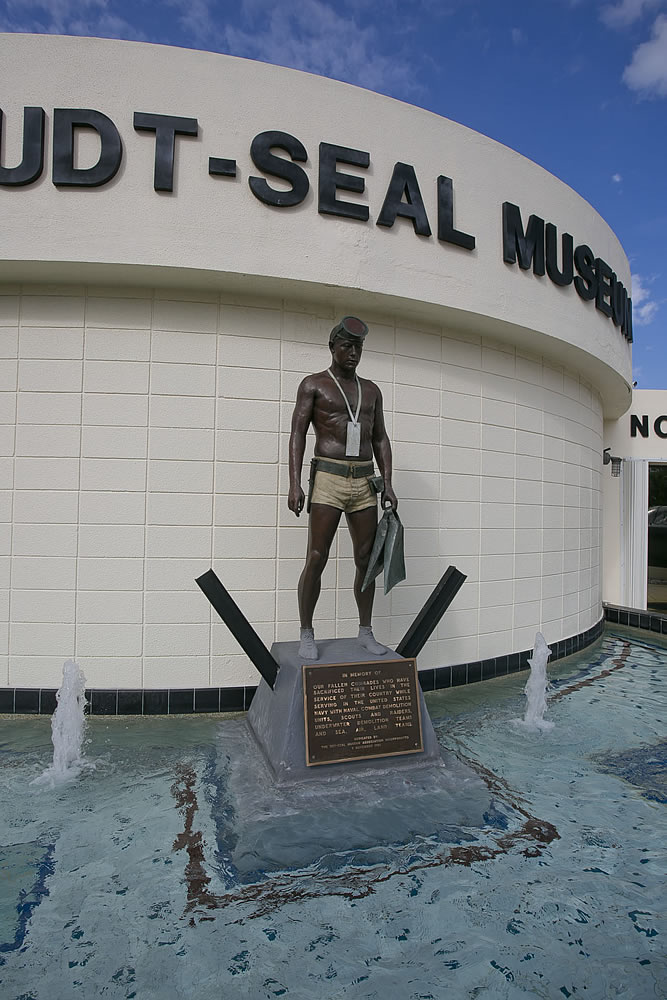The National Navy UDT-SEAL Museum
Fort Pierce, Florida
The entrance to the National Navy SEAL Museum is guarded by the statue of the Naked Warrior, which specifically portrays the elite men of the U.S. Navy’s Underwater Demolition Teams of World War II. These men went into battle equipped only with swim fins, face mask, and a slate board with a lead pencil on which to record intelligence gathered. Their only weapon was a K-Bar knife. The statue also stands in honor all maritime commando units that have provided legacy capabilities still resident in today’s U.S. Navy SEAL Teams. Several of these legacy units received basic or advanced schooling at Amphibious Training Base (ATB) Fort Pierce, FL beginning as early as February 1943 in proximity of where the National Navy SEAL Museum now stands. (read more here).
During their early missions, Navy combat swimmers were completely clothed in combat uniforms, boots and metal helmets. That changed during a mission in preparation for the invasion of the Japanese held atoll of Kwajalein in January 1944. Ordered to conduct a reconnaissance mission to assess beach conditions in advance of the planned assault, the two man team of Ensign Lewis F. Luehrs and Chief Petty Officer Bill Acheson could not get close enough to shore because of a coral reef. They stripped to their underwear and swam over the reef to complete the mission undetected, becoming the first “Naked Warriors.” Following the success of that mission, training emphasized strong swimming skills and operating without the use of lifelines, wearing only face masks, swim trunks and fins.
The Naked Warrior statue at the front of the Museum depicts a typical World War II era combat swimmer with no protective clothing against cold, marine animals, much less enemy snipers, mortars or worse. He carries no weapons. He is armed with tools for a typical mission, including a slate for communication, a lead line for recording depth, a demolition pack and a knife for cutting explosive charge primer cords or for escaping from entanglements such as netting or seaweed. He stands on a “horned scully” like those preserved at the Museum, which were beach defense devices used extensively during WW II.
The Naked Warrior was created by the famous Johnson Atelier outside of Philadelphia, PA, the famous workshop of the sculptor J. Seward Johnson, Jr. It was officially unveiled on November 12, 1988. It replaced a manikin in a wet suit that was destroyed by vandals during the early days of the Museum.
The statue is a testament to the raw bravery and tremendous skills of the Navy combat swimmers, the “Naked Warriors” who were the predecessors of today’s Navy SEALs.

